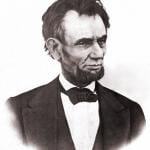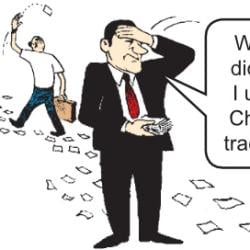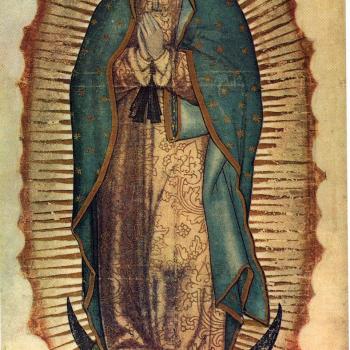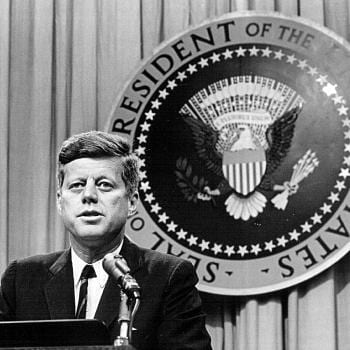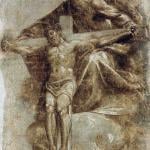One of the best books never read was Garry Wills’ Politics and Catholic Freedom. This was a 1964 book, written during the Second Vatican Council, that tried to put papal encyclicals in historical perspective. How binding were they? How many were there? What status did they have in the church’s teaching authority? These questions in some ways became obsolete once the bishops in Rome decided to update the church and gave the green light to the main assumptions of modern politics — religious freedom and popular consent. Before that, Wills and other lay Roman Catholics labored under relatively constant reminders that they were supposed to follow the teaching of the Vatican on church and state. If they did, they could not be good Americans. If they did not, they could not be good Roman Catholics. Here is one summary of the book:
In 1964 he wrote Politics and Catholic Freedom as a rebuttal to Paul Blanshard’s best-selling American Freedom and Catholic Power (1949), which had warned that Catholicism in America represents an authoritarian threat to democratic ideals. Wills countered that although some Catholics do perceive the Vatican’s word as law, the Church hierarchy is no longer invested with the authority to govern lay matters, and that there is nothing inherent in the Catholic faith that should be interpreted as prohibitive of free and open discussion.
No one read the book because Vatican II seemed to lift the older bans and removed the historic hostility between Rome’s conservatism and modern politics’ liberalism.
Except, that debate has not really gone away. Now the issue is how much Vatican II changed previous teaching. A related question is the degree to which earlier teaching was infallible or not. Lawrence King and Robert T. Miller recently tried to update a number of the dynamics that Wills addressed, this time by determining which papal teachings are actually infallible:
Pius IX, Leo XIII, and some other nineteenth-century popes taught that the ideal state was a confessional Catholic state, which may (and in many cases should) punish heresy among the baptized and suppress the false religious practices of non-Catholic religious groups. By contrast, Vatican II, as well as Popes John Paul II and Benedict XVI, taught that every person has a natural right to be free from external coercion in religious matters—a right that extends to his acts of private worship, public worship, and testifying to others regarding his faith, including his acts as an individual and as part of a religious community, except insofar as his actions disrupt the public order. The contradiction is obvious. Doesn’t it fatally undermine the Church’s claim to teach infallibly on matters of faith and morals?
No, it does not. The problem is easily solved once we recognize that not everything the Church teaches is taught infallibly. Indeed, Pius XII stated in Humani generis (1950) that the teachings of the popes in their encyclicals are not typically infallible ex cathedra pronouncements but only matters of doctrina catholica: teachings of lesser authority that are not irreformable and that can (and on rare occasions do) change. For example, Eugenius IV taught in Exultate Deo (1439) that the matter of the sacrament of Holy Orders includes the chalice and paten, and this remained doctrina catholica for centuries, until Pius XII taught in Sacramentum ordinis (1947) that the laying on of hands is the sole matter of this sacrament. Hence, if the nineteenth century teachings on integralism are only doctrina catholica, then there is a natural and obvious solution to the apparent contradiction between these teachings and the later ones: the solution, advocated by Benedict XVI and others (see Benedict’s Christmas address to the Roman Curia in 2005), is to take all the documents at face value, candidly admit they contradict each other, and then explain that the older teachings, which were never infallible, were changed at the Second Vatican Council. One of us argued for this solution in Public Discourse back in July.
What ensues is a lengthy and complicated point by point argument about what popes said, when they said it, and what they meant when saying it.
And yet, King and Miller conclude with a happy-faced reassurance:
Christ gave his Church an infallible magisterium so that ordinary faithful Catholics can know, easily and reliably, what they need to know to be saved. Any theory that implies that only professional scholars can figure out what has been taught infallibly has to be wrong.
If that were true, then bishops would have written the article that King and Miller wrote. Back in the days of “pay, pray, obey,” the bishops and Vatican officials did not have to worry about many lay Roman Catholics with the sort of expertise that might lead to differences with the holy teachings of the church. But now with two to three generations of professional Roman Catholics, professors, lawyers, physicians know more about the matters about which popes pontificate than any successor to Peter.
Which is only to say that King and Miller have written a plausible defense of the papacy. But it has no more force than the Protestant who attends a Bible study and says “this, is what Scripture teaches.” In Roman Catholicism, the only ones with the authority to give authoritative interpretations of church dogma and canon law are the bishops. It’s the same dynamic as that between the Supreme Court and the U.S. Constitution. You and I may have very good ideas about what the founding documents mean, but you and I are not on the Court and so we are left with our opinions.
And that is all the definitive list of King and Miller adds up to — like their opinion, man.


